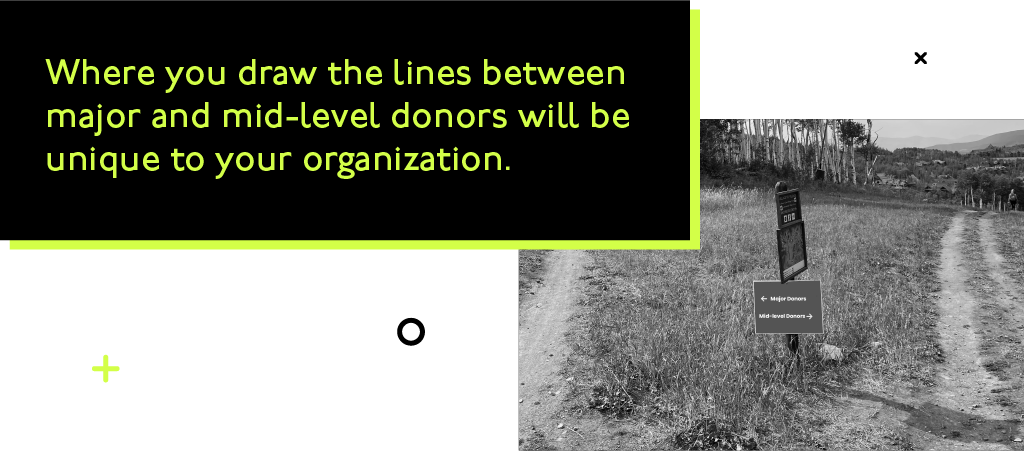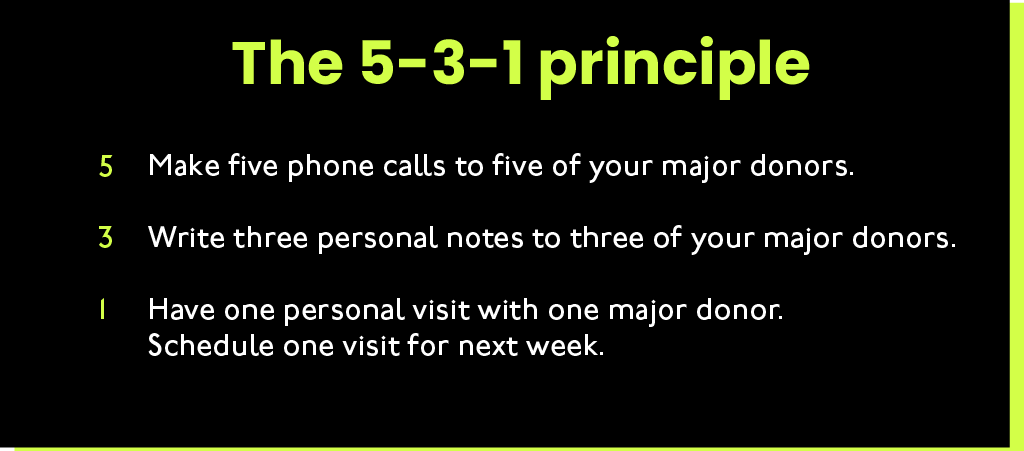Guest Blog: How to cultivate major donors with the 5-3-1 principle.
Have you ever found yourself feeling like you should be doing more to build relationships with major donors? You’re not alone! In fact, there are countless other fundraisers who find themselves in the same boat!
Nonprofit professionals are a resourceful group. And while we may not have all the answers, we’re great at using our experience to work together and develop solutions for the most common obstacles in our industry.
While the specifics of our work are different, we know we all have the shared goal of making the world a better place. So, fundraisers are generally quick to lend a helping hand and share our knowledge with each other.
Today’s guest blog author, Edward “Jay” Sinclair, has worked with nonprofit organizations for 40 years and spent 28 years as the Executive Director of Star of Hope Ministries. He is the creator of the 5-3-1 strategy, an approach he’s used to build relationships with major donors, time and time again.
If you find yourself wishing you had more time to focus on building relationships with major donors, read on to learn Jay’s approach!

The 5-3-1 principle for executive directors.
By Edward “Jay” Sinclair
As long time nonprofit Executive Director of almost 30 years, I’ve been grateful for the opportunity to build relationships with many major donors. While this work has been a privilege, it can also be a daunting task at times.
I say that because during my career, I’ve had to raise money without the benefit of a Director of Development or additional staff to share the workload of major donor cultivation.
You know how it is. I’m sure you also have limited time and a myriad of other responsibilities in addition to building relationships with major donors!
So, I had to develop a system for major gift cultivation to make it work.
I named it the 5-3-1 strategy. I’ve been using this simple system for many years. And it’s helped yield results that balanced my organization’s budget year over year. Maybe it will work for you!
The principle itself is easy to explain and understand. The challenge is in being intentional about doing it with regularity.
I’ve laid out the 5-3-1 principle in six steps:

1. Identify major donors.
Begin by identifying the top 50 to 75 major donors of your organization. The threshold for what is defined as a major gift will be different for each organization. It depends on the size of your budget and your average major gift amount.
A hospital, for example, may define a major gift as donations of $25,000 or more. But a small nonprofit might define a major gift as any donation over $250. You must decide what threshold you are going to use for your organization. It could be $250, $500, $1,000, $2,500 or even more!
2. Analyze engagement.
Once you have identified your list of major donors, keep an ongoing record of all their interactions with your organization. You need to know what they’re hearing and how they’re responding when building relationships with major donors.
This record will include all the touches in your regular fundraising outreach for major donors, as well as personal visits, phone calls, notes, and emails.
If you don’t have it already, there are plenty of software options available for any budget to help you keep track!

3. Make time.
Next, you will need to block out a three-to-four-hour period on the same day, every week. Say every Wednesday from 10 am until 2 pm for example.
Then make a recurring event in your calendar called “major gift cultivation.”

4. Use 5-3-1 to cultivate major donors.
Every week during your defined major gift cultivation hours:
5: Make five phone calls to five of your major donors.
3: Write three personal notes to three of your major donors.
1: Have one personal visit with one major donor, and schedule one visit for next week.
5. Make the most of it.
Earlier, I mentioned the real challenge of the 5-3-1 principle is doing it intentionally and with regularity. Part of that is truly making the most of the time you set aside for building relationships with major donors.
So, spend your time on calls and during visits really getting to know your donors and asking them questions. And write your personal notes with the same intention.
You may find yourself tempted to talk about all the good you are doing and your latest accomplishments. But remember, you’ve set aside this time for building relationships with your major donors, not to talk about yourself!
6. Be consistent.
If you do this, week in and week out, you will have made 250 phone calls, written 150 notes, and enjoyed 50 visits with major donors after a year.
If you start this strategy with a list of 50 major donors, you will have multiple personal touches and interactions with each of your major donors every year.
And at the end of a year, you should have a much stronger relationship with every one of them.
I would love to know if it works for you as well has it’s worked for me. Feel free to shoot me an email!
EDWARD “JAY” SINCLAIR
COACHING TO BUILD CAPACITY
Coach, EJS Consulting, LLC
Executive Director Emeritus, Star of Hope Ministries, Inc.

About the author:
Jay Sinclair has worked in small and large nonprofit organizations for 40 years. For most of his career, he served as Executive Director of Star of Hope Ministries in Paterson, NJ. During his 28 years with Star of Hope, he led the rebirth of the organization to become a regional coalescing force that mobilized over 200 churches, businesses, and community organizations to work together toward positive, sustainable changes in the under-resourced neighborhoods of Greater Paterson.
He served as the Director of Social Services for The Salvation Army in New York City for five years. As part of the Executive Management Team, he provided administrative oversight for a $50M budget, 50 service delivery sites and 680 employees. He managed all government-contracted social services for the Army in the five boroughs of New York City and Long Island.
Jay has an undergraduate degree in social work from Oral Roberts University and a master’s degree in counseling from Montclair State University. His consulting work is principally focused in New Jersey and Northern New England. He and his wife Barbara reside on the seacoast of New Hampshire and are the parents of four children and four grandchildren.







